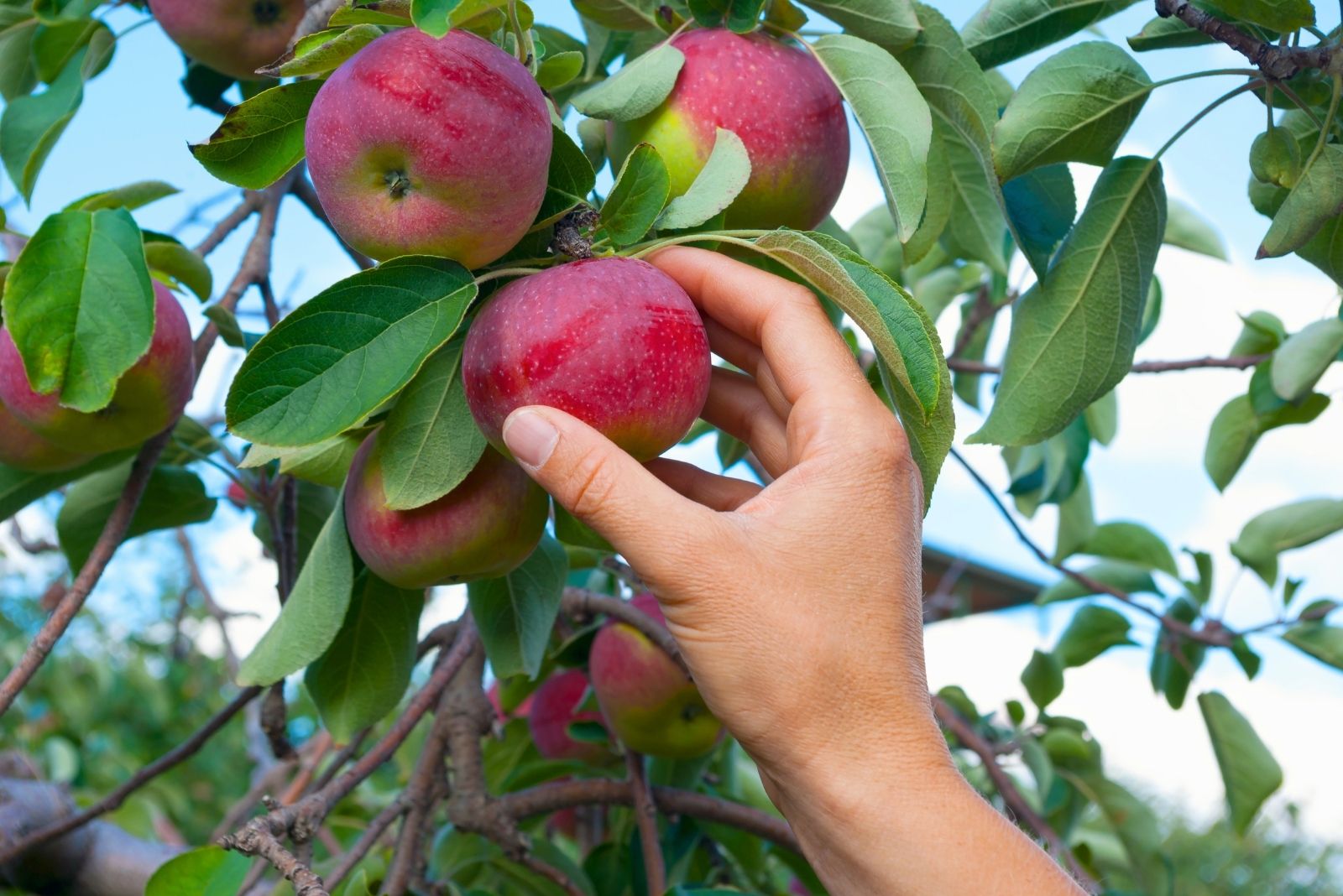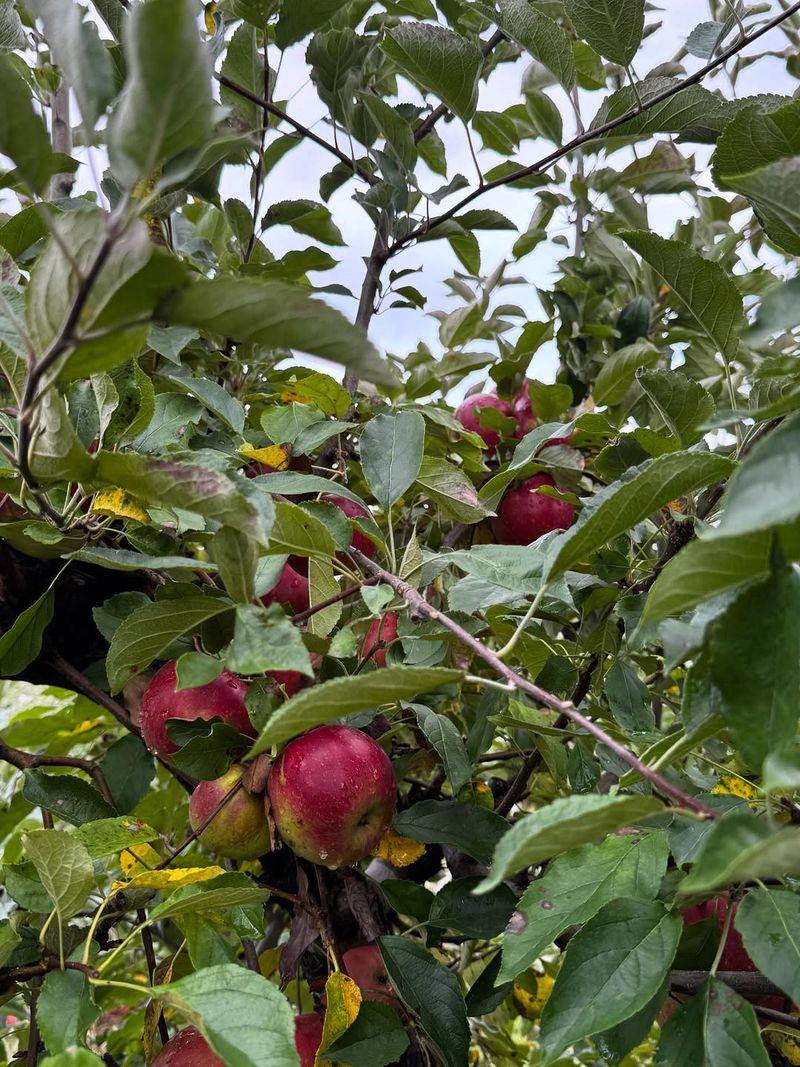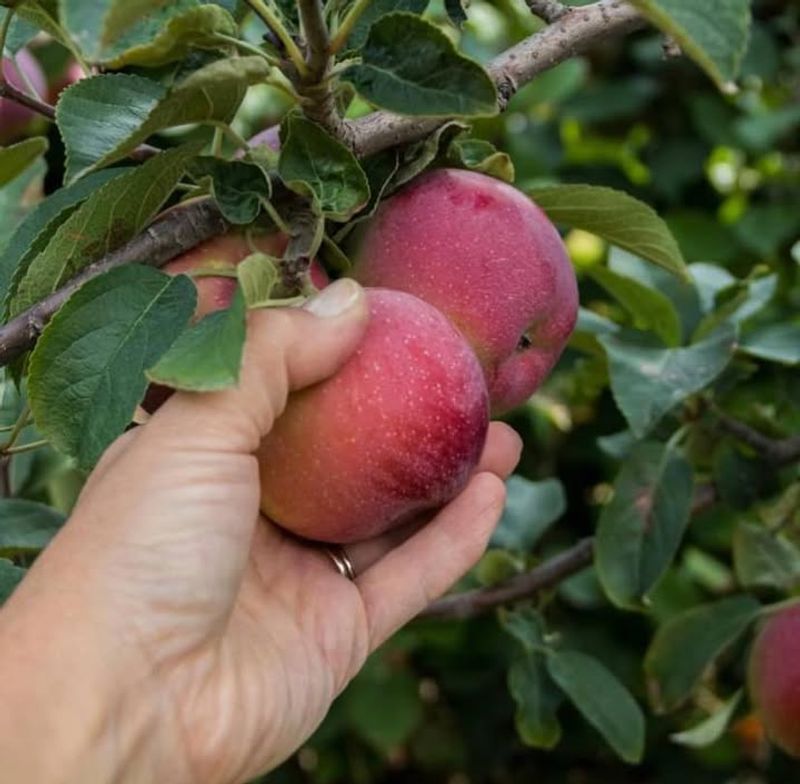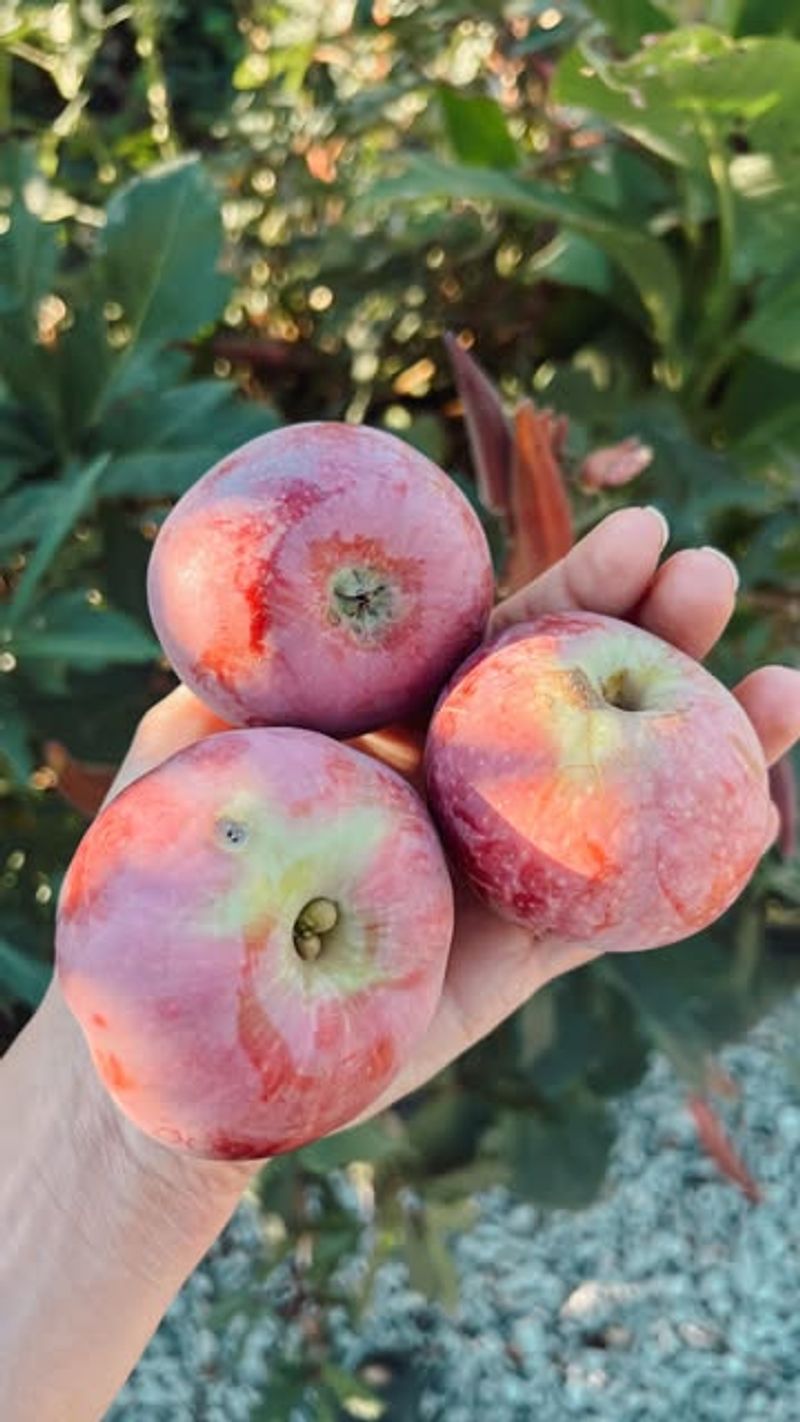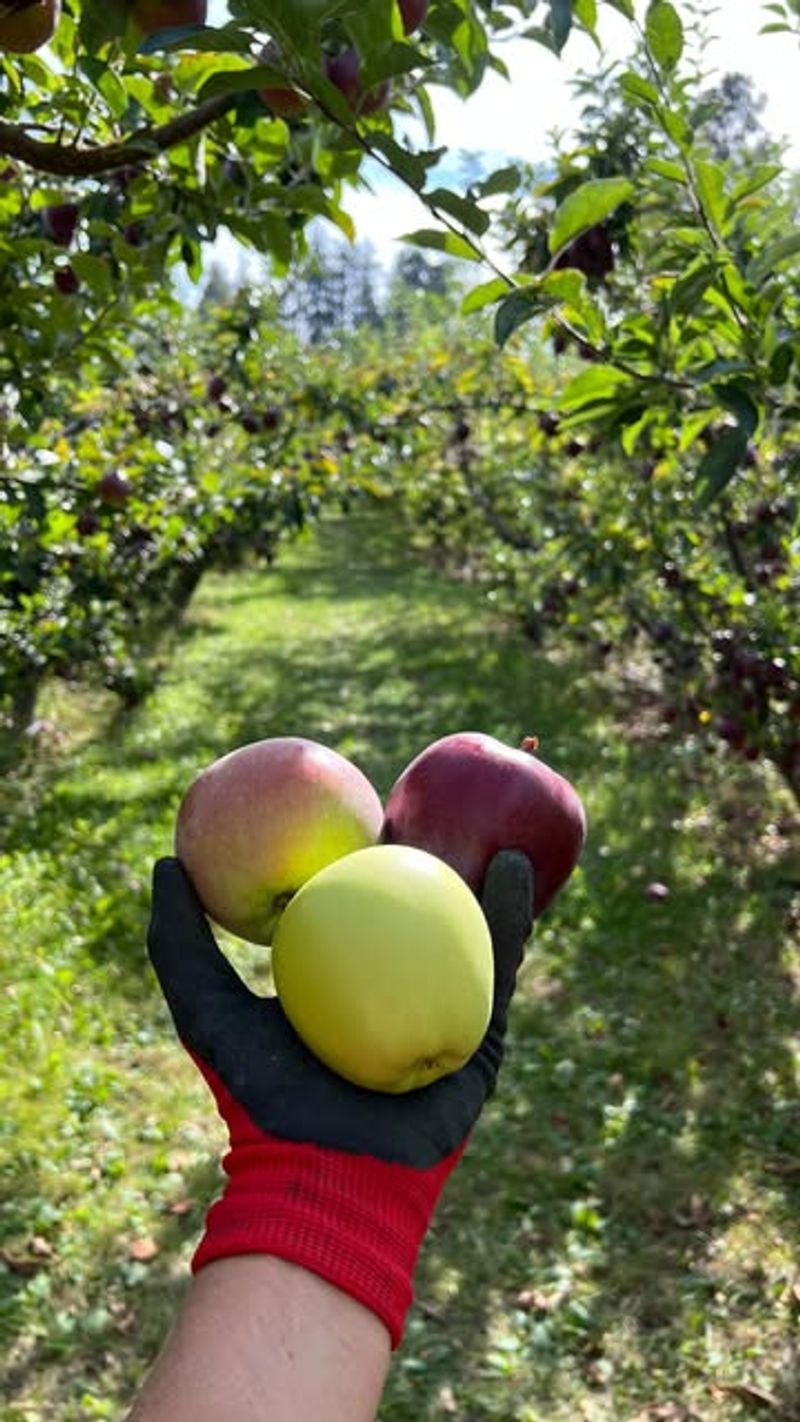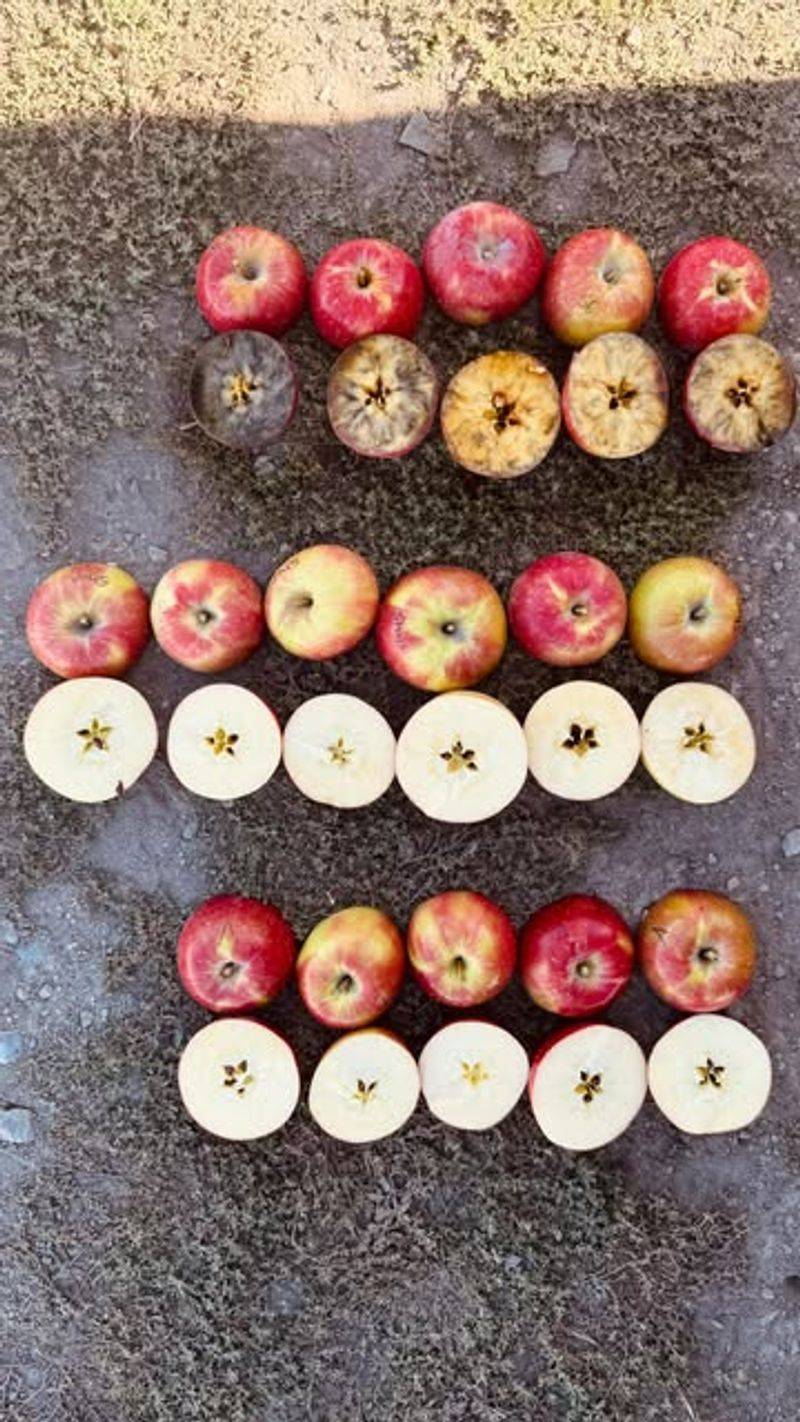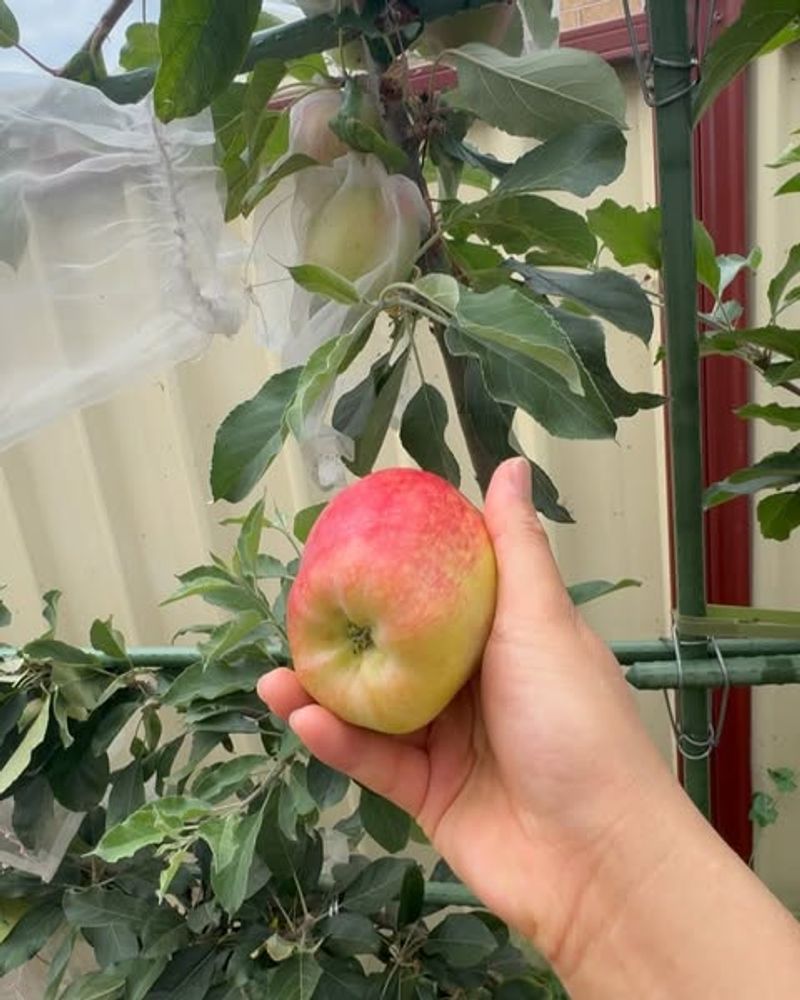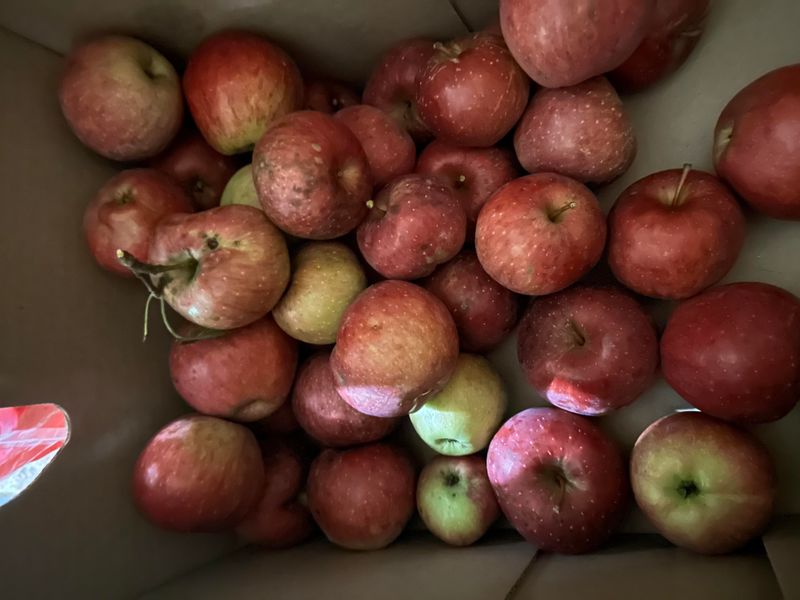Minnesota’s cool nights and warm autumn days create perfect conditions for growing crisp, flavorful apples like Honeycrisp and Zestar. Whether you’re tending a backyard orchard or visiting a local apple farm, knowing when and how to harvest makes all the difference.
Picking apples at just the right moment ensures the best taste and longest storage life. These tried-and-true tips from experienced Minnesota gardeners will help you gather your apple harvest like a pro.
1. Watch For Subtle Color Changes
Apples don’t just turn red overnight. The shift from green to their mature hue happens gradually, and paying attention to these changes tells you when they’re ready.
In my own garden, I check the base color underneath the blush. When that background turns from bright green to a creamy yellow or pale shade, it’s usually time.
Minnesota varieties like Haralson and Sweet Sixteen show clear color cues. Don’t rush the harvest just because you see a little red.
2. Test The Stem Before You Twist
Ripe apples come off the branch easily when you lift and twist gently. If you have to yank or pull hard, they’re not ready yet.
Hold the apple in your palm and rotate it upward slightly. A ready fruit will release with barely any effort, stem intact.
For me, the easiest way is to support the branch with one hand while testing. Minnesota’s shorter growing season means timing matters, so this simple test saves guesswork and prevents damage to next year’s buds.
3. Check The Seeds Inside A Sample Apple
Cut open one apple from your tree and look at the seeds. Dark brown or black seeds mean the fruit is fully mature inside.
White or pale seeds indicate the apple is still developing, even if it looks ready on the outside. This trick is especially helpful with green varieties.
Minnesota gardeners often use this method in early September when weather can be unpredictable. Checking seeds gives you confidence before committing to a full harvest day.
4. Pick On A Dry Day After Morning Dew
Moisture on the fruit can lead to rot during storage. Waiting until the dew evaporates keeps your apples in better condition longer.
In Minnesota, our mornings can be quite dewy, especially in late summer. I usually start picking around mid-morning when the sun has dried things off.
Avoid harvesting right after rain too. Wet apples bruise easier and don’t store well, so patience pays off when the forecast clears up nicely.
5. Taste Test Before Harvesting The Whole Tree
Nothing beats actually tasting an apple to know if it’s ready. Sweetness, crispness, and juice content tell the full story.
Sample one from the sunny side of the tree and one from the shaded side. They can ripen at different rates depending on sun exposure.
Minnesota’s variable weather means some years apples mature faster than others. Your taste buds are the best judge, and this method never fails when you’re unsure about timing.
6. Start With The Lowest Hanging Fruit First
Apples near the bottom of the tree often ripen first because they get more reflected light from the ground. Starting low makes practical sense too.
You can reach them without a ladder, reducing the risk of falls or bruising fruit. Work your way up as the season progresses.
In my experience with Minnesota apple trees, the lower fruit also tends to be larger. Save the higher branches for later when those apples have caught up in ripeness.
7. Handle Each Apple Like It’s Fragile
Bruised apples don’t store well and can spoil quickly. Treat every piece of fruit gently from tree to basket.
Don’t toss them or pile them too high. Use a padded container or line your bucket with a soft towel to cushion the load.
Minnesota gardeners know that our apples need to last through long winters. Careful handling now means enjoying crisp fruit well into December and beyond, making every harvest effort worthwhile.

